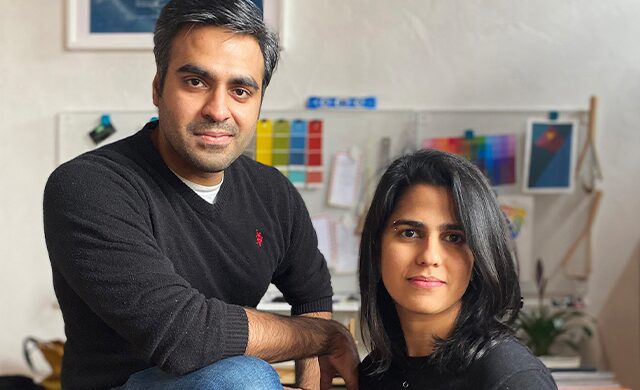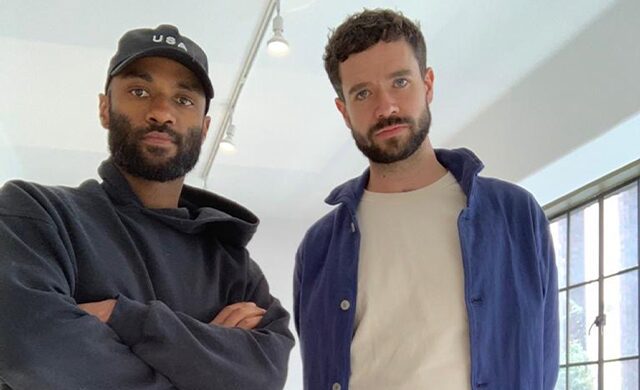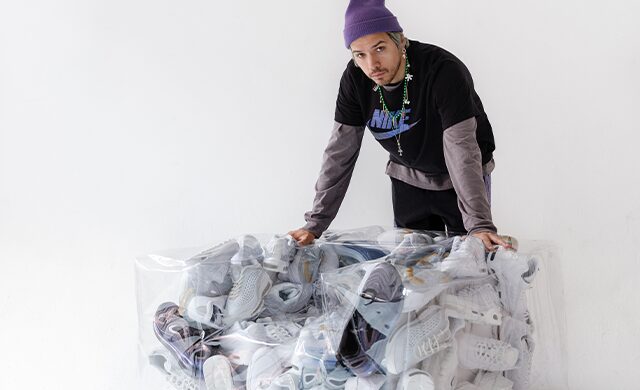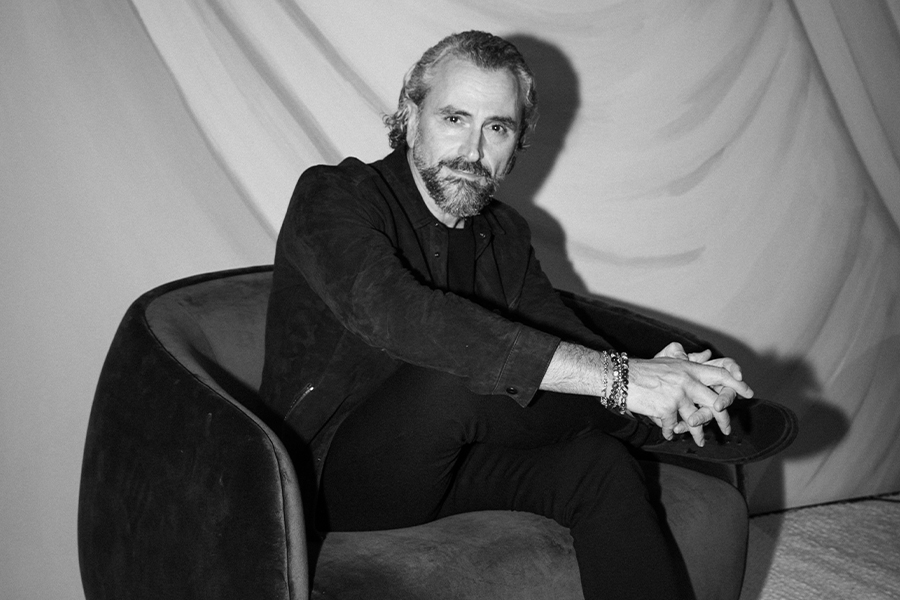Hana Getachew
Brooklyn, New York, and Addis Ababa, Ethiopia
The details: “I’m always captivated by the colors in Ethiopia, whether it’s the textile market, the food, or even the landscape,” says Bolé Road Textiles founder Hana Getachew, who was born in the country’s capital, Addis Ababa, before her family emigrated to Montreal when she was 3 years old, later settling in Long Island, New York when she was 7. She studied interior design at Cornell University and then cut her teeth at Studios Architecture for 10 years, but her desire to work in Ethiopia only intensified. “I eventually realized that textiles would be a perfect way to merge my love of design with my heritage,” she says. Though her studio is in Brooklyn, all of Bolé Road Textiles’s fabrics are handwoven, dyed, and spun by local artisans in Addis Ababa. In fact, in 2019, she launched the Harar collection, inspired by the country’s region of the same name. “I find inspiration in Ethiopia,” Getachew says. “Color always brings me life.”
Manan Narang and Urvi Sharma
Providence, Rhode Island, and New Delhi, India

The details: Though Manan Narang and Urvi Sharma grew up in New Delhi, the pair didn’t cross paths until they attended the Rhode Island School of Design (RISD) to pursue degrees in furniture design. They realized how well they worked together, and in 2017, they launched INDO, named for the Indian qualities found in their designs, such as a blend of bespoke, handmade aesthetics with the forms of contemporary furniture. Their latest, a lighting and mirror collection, includes the Mooda pendant, which creates a gentle shadow onto the surface where it shines. “There is something incredibly rewarding about doing the work, and the result being something you can hold or interact with,” Sharma says.
Lauren Williams
Dallas

The details: While designing a rental home in her hometown of Dallas, artist Lauren Williams found that her taste for art didn’t align with her budget, so “I took it upon myself to create something for the space,” she says. Williams suspended hundreds of single fiber strands from a wooden dowel, creating a statement-making canvas. Soon, she was designing tapestries like Hendrix, a free-flowing fiber piece with dyed and painted elements that caught the attention of carpet manufacturer Art+Loom. That became Revolution, a capsule collection of rugs for the company. Last year, she also completed 144 pieces for the guestrooms of the remodeled Kimpton Alexis Hotel in Seattle (with a design by Design Studio Ltd). “All these projects are pushing the scope of my designs,” she says. “[It’s] a really interesting avenue for me.”
Lydia Cash
Chicago

The details: Born into a military family that often moved around, Lydia Cash found solace in painting. She studied art at Auburn University, where she experimented with different styles and mediums. “I began throwing paint around and ended up liking the pieces I was creating so much more,” says Cash. “I was pleasantly surprised to find that other people liked them, too.” Moonlighting as a painter and putting her work on Instagram, she moved to Chicago in 2013 when her pieces caught the eye of local architecture and design firm Knauer, which hired Cash to create 10 custom paintings for Ocean Prime restaurant in Washington, DC. Now, her work can also be seen in the Chicago locations of Gibsons Italia and Ocean Prime. “A painting can be whatever I want it to be,” she says, “and there’s no feeling that compares to that.”
Mark Grattan and Adam Caplowe
Mexico City

The details: The New York-raised Matt Grattan founded Vidivixi in Brooklyn, New York in 2014 but relocated to Mexico City two years later to explore new production methods and manufacturing opportunities. It was there he met Londoner Adam Caplowe, who soon joined him as his business partner. “Mexico City definitely has an impact on the work,” which also takes cues from Deco-era design and Asian themes, explains Grattan. The duo’s latest includes the leather-clad On Second Thought sofa and club chair; the Hermanx auxiliary table, with eight U-shaped interlocking curves; and the Switch sideboard, which is fully stretched in natural leather. Shifting their focus to offer more hospitality products, they are starting to design pieces with an emphasis on “bridging the gap between sculptural art and design,” Caplowe adds.
Gabriel Tan
Singapore and Porto, Portugal

The details: After joining Singapore’s Navy, Gabriel Tan by chance picked up a few design books from the library on his way to his barracks. From that moment, he was hooked. “I decided then that this was what I wanted to do with my life,” he says. After finishing his military service in 2003, Tan studied industrial design at the National University of Singapore and formed Outofstock Design with three partners. In 2016, after nine years, he launched his own studio, with recent collaborations including the Aurora carpet (pictured) for Swedish brand Asplund, inspired by the northern lights, and the Rin sofa with Japanese and Scandinavian elements for Ariake. “That one’s creations can be a part of a stranger’s life in another corner of the globe, there is something special about that, and that’s what drives me every day,” he says.
Harry Nuriev
New York

The details: Born in Stavropol, Russia, Harry Nuriev moved to Moscow at age 22 to study architecture, founding Crosby Studios in 2014 in the Russian capital before moving to New York to open a second studio, where he works alongside business partner and CEO Tyler Billinger. With Crosby Studios, Nuriev has set out to create something new from something old. “Upcycling is so important in today’s world. There are many things I want to rethink rather than create something new,” he says, citing his Soviet childhood as his main source of inspiration. His first furniture collection debuted during New York Design Week in 2016, and among his latest is a collaboration with Balenciaga on a sofa that uses cutoffs and leftovers from clothing stock. “For me, product design is mini architecture,” he says. “It is an easy way to make my design language compact and accessible.”
Sang Hoon Kim
Seoul

The details: Having majored in interior design back home in South Korea, Sang Hoon Kim moved to Detroit to study at the Cranbrook Academy of Art. It allowed him to “feel and gain personal experience with the background and history of modern design that had come across as something very distant when I was in Korea,” he says. Inspired by the foam factory his family has operated for three generations, he endeavored to create sculptural seating using memory foam, removing the need for drilling, cutting, and finishing. The end result is his recently launched Foam collection, which includes seating, bookshelves, and coffee tables. “My foam works are like a three-dimensional painting,” he says. “It brings a freeing aspect into a space, designed as if [I am] modeling with clay or drawing pictures, without any formalities.”
Photography courtesy of Tara Striano, INDO, Lauren Williams, Lydia Cash, Vidivixi, Gabriel Tan Studio, Crosby Studios, and Sang Hoon Kim
This article originally appeared in HD’s July 2020 issue.


